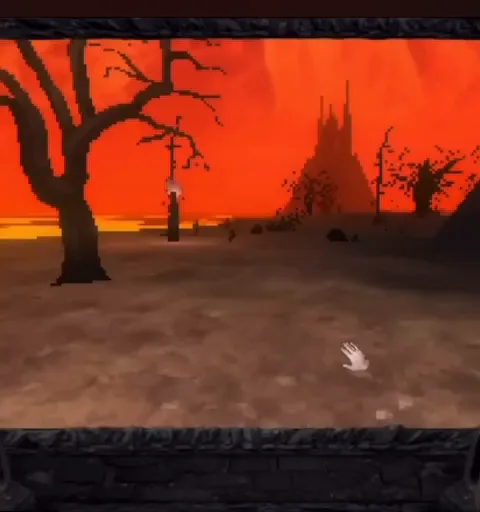Wales (Welsh: Cymru [ˈkəmrɨ] ⓘ) is a country that is part of the United Kingdom. It is bordered by the Irish Sea to the north and west, England to the east, the Bristol Channel to the south, and the Celtic Sea to the south-west. As of 2021, it had a population of 3.2 million.[2] It has a total area of 21,218 square kilometres (8,192 sq mi) and over 2,700 kilometres (1,680 mi) of coastline.[8] It is largely mountainous with its higher peaks in the north and central areas, including Snowdon (Yr Wyddfa), its highest summit.[13] The country lies within the north temperate zone and has a changeable, maritime climate. Its capital and largest city is Cardiff.
A distinct Welsh culture emerged among the Celtic Britons after the Roman withdrawal from Britain in the 5th century, and Wales was briefly united under Gruffydd ap Llywelyn in 1055. After over 200 years of war, the conquest of Wales by King Edward I of England was completed by 1283, though Owain Glyndŵr led the Welsh Revolt against English rule in the early 15th century, and briefly re-established an independent Welsh state with its own national parliament (Welsh: senedd). In the 16th century the whole of Wales was annexed by England and incorporated within the English legal system under the Laws in Wales Acts 1535 and 1542. Distinctive Welsh politics developed in the 19th century. Welsh Liberalism, exemplified in the late 19th and early 20th century by David Lloyd George, was displaced by the growth of socialism and the Labour Party. Welsh national feeling grew over the century: a nationalist party, Plaid Cymru, was formed in 1925, and the Welsh Language Society in 1962. A governing system of Welsh devolution is employed in Wales, of which the most major step was the formation of the Senedd (Welsh Parliament, formerly the National Assembly for Wales) in 1998, responsible for a range of devolved policy matters.
At the dawn of the Industrial Revolution, development of the mining and metallurgical industries transformed the country from an agricultural society into an industrial one; the South Wales Coalfield's exploitation caused a rapid expansion of Wales's population. Two-thirds of the population live in South Wales, including Cardiff, Swansea, Newport, and the nearby valleys. The eastern region of North Wales has about a sixth of the overall population, with Wrexham being the largest northern city. The remaining parts of Wales are sparsely populated. Since decline of the country's traditional extractive and heavy industries, the public sector, light and service industries, and tourism play major roles in its economy. Agriculture in Wales is largely livestock-based, making Wales a net exporter of animal produce, contributing towards national agricultural self-sufficiency.
Both Welsh and English are official languages. A majority of the population of Wales speaks English. Welsh is the dominant language in parts of the north and west, with a total of 538,300 Welsh speakers across the entire country. Wales has four UNESCO world heritage sites, of which three are in the north.
Etymology
Main articles: Etymology of Wales and Cymru
The English words "Wales" and "Welsh" derive from the same Old English root (singular Wealh, plural Wēalas), a descendant of Proto-Germanic *Walhaz, which was itself derived from the name of the Gauls known to the Romans as Volcae. This term was later used to refer indiscriminately to inhabitants of the Western Roman Empire.[14] Anglo-Saxons came to use the term to refer to the Britons in particular; the plural form Wēalas evolved into the name for their territory, Wales.[15][16] Historically in Britain, the words were not restricted to modern Wales or to the Welsh but were used to refer to anything that Anglo-Saxons associated with Britons, including other non-Germanic territories in Britain (e.g. Cornwall) and places in Anglo-Saxon territory associated with Britons (e.g. Walworth in County Durham and Walton in West Yorkshire).[17]
The modern Welsh name for themselves is Cymry, and Cymru is the Welsh name for Wales. These words (both of which are pronounced [ˈkəm.rɨ]) are descended from the Brythonic word combrogi, meaning "fellow-countrymen",[18][19] and probably came into use before the 7th century.[20] In literature, they could be spelt Kymry or Cymry, regardless of whether it referred to the people or their homeland.[18] The Latinised forms of these names, Cambrian, Cambric and Cambria, survive as names such as the Cambrian Mountains and the Cambrian geological period.[21]
History
Main articles: History of Wales and Timeline of Welsh history
See also: Archaeology of Wales
Caradog by Thomas Prydderch. Caradog was leader of the north Walian Celtic tribe, the Ordovices.
Although the Welsh nation would not arise until the Middle Ages, the territory of Wales was permanently settled from the end of the last ice age onwards.[22] These first farmers left many impressive funerary monuments, as well as settlement sites that speak to a dispersed culture. With the arrival of the Bronze Age, the Great Orme in North Wales became Britain's premier producer of copper, one of the key ores for smelting bronze.[23] It is likely that the wealth of mineral resources in Britain, and especially Wales, attracted the Roman invasion,[24] but by this time the island had become distinctively Celtic in culture, and the Neolithic population was largely replaced. It was this Iron Age Celtic culture, and their common language, that were called the Britons by the Romans.[25]: 90
With the departure of the Romans, Britain fractured into various kingdoms. Despite this, there is a sense in which the Roman withdrawal of 383 created a post Roman nation of Britons, with Magnus Maximus proclaimed Roman emperor in Britannia and Gaul. Although long before the term Cymry (the Welsh term for the Welsh) had been adopted, the concept of a British people, from which the Welsh would emerge, was created here.[26]: 54
Encroachment by Germanic Anglo-Saxon settlers gradually displaced the indigenous culture and language of the Britons, and one group of these Britons became isolated by the geography of the western peninsula, bounded by the sea and English neighbours. It was these English neighbours who named the land Wallia, and the people Welsh.[27]: 15
The people of Wallia, medieval Wales, remained divided into separate kingdoms that fought with each other as much as they fought their English neighbours.[27]: 15 Neither were the communities homogenously Welsh. Place name, historical records and archaeological evidence point to coastal Viking/Norse settlement in places such as Swansea, Fishguard and Anglesey,[28]: 4, 13 and Saxons settled inland amongst the Welsh in places such as Presteigne.[29]: 125
Hywel Dda enthroned
In the 10th century, Hywel ap Cadell, later Hywel Dda, formed the kingdom of Deheubarth from inheritances in Dyfed and Seisyllwg, and then gained control of the kingdoms of Gwynedd and Powys in 942.[30]: 337–338 With control of nearly all the territory of Wales,[27]: 22 he codified Welsh law, a law code that survived the later fracture of his kingdom, and that became a significant step in the creation of the nation.[27]: 29 With a common culture and an external threat, the kingdoms of Wales began to see themselves as one people.[27]: 30
A century later the Kingdom of Gwynedd was in ascendency, and Gruffydd ap Llywelyn subdued all opposition by 1057, becoming the only king to unite all of Wales, and parts of England on the border. "Thus, from about 1057 until his death in 1063, the whole of Wales recognised the kingship of Gruffydd ap Llywelyn. For about seven brief years, Wales was one, under one ruler, a feat with neither precedent nor successor."[26]: 100
The kingdom did not last, and Gruffydd met his death as a result of a surprise attack by Tostig, brother of the English King, Harold.[31]: 305–307 After Gruffydd's death, Harold married his widow, but she would be widowed again by the Norman invasion of England in 1066.[32]
The Normans followed their invasion of England with incursions into Wales, forming the semi-independent Norman Welsh marches (from the French for borderlands), and dividing them from the unconquered Pura Wallia.[27]: 25 The fortunes of Welsh marcher lords and various Welsh princes ebbed and flowed, until Llywelyn ab Iorwerth (Llywelyn the Great) forced all other Welsh princes to submit to him in 1216.[33] Yet Wales was divided again after his death, and it was left for his grandson, Llywelyn ap Gruffudd to secure the supremacy once more, recognised as Prince of Wales by the English king, Henry III in the treaty of Montgomery of 1267.[34]
Relations with Henry's successor, Edward I, broke down and led to a war of conquest, concluding in 1283 with English victory.[35]: 510 The following year the statute of Rhuddlan ended Welsh independence. Wales was divided between principality, ruled by Edward, and the marches and ruled by feudal marcher lords.[36]: 461 This persisted, despite the Welsh rebellion under Owain Glyndŵr of 1400–1415,[37] until the rise of the Tudors, with Welsh support.[38]: 274 With the Laws in Wales Acts of Henry VIII, the Welsh became full citizens in the Kingdom of England, with parliamentary representation.[39]: 274 The Welsh border was also formally defined and the territory reunited.[40]: 268–273
Dowlais Ironworks (1840) by George Childs (1798–1875)
In 1707 the act of union created the Kingdom of Great Britain.[41] The industrial revolution and the beginning of empire led to the rapid increase in mining and exploitation of Welsh natural materials – metals, coal and slate. The population of Wales expanded rapidly[42]: 185 and Wales moved to the centre of the British economy, but the changes bred resentment, this time towards industrialists and not the English state.[27]: 61 Meanwhile a series of religious revivals transformed the character of the nation, beginning a tradition of non-conformism.[43]: 345–50 This carried over into the political sphere too. The rapid industrialisation of parts of Wales gave rise to strong and radical Welsh working class movements which led to the Merthyr Rising of 1831, the widespread support for Chartism, and the Newport Rising of 1839.[44] Strong liberal traditions were forged and later replaced by socialism.[45]: 34 Since 1922 Wales has voted Labour in every general election.[46]
From the mid 19th century until 1914, Wales experienced a strengthened political culture, religious and cultural revival, renewed interest in Welsh literature, the revival of eisteddfodau. There was a thriving economy a renewed interest in Welsh language, and music, non-conformist Christianity and the emergence of strong national identity, along with the founding of many national institutions.[47]: 95 However the period also saw the publication of a report on education that became known as the Treachery of the Blue Books. The report blamed Welsh language and non conformism for poor educational standards and led to a requirement for bilingual education.[48]: 2 This fed the rise of the Welsh nationalist movement, expressed in the Cymru Fydd movement, which advocated for greater autonomy and recognition of Welsh identity within the United Kingdom.[49] Calls for devolution grew over the course of a century, and in 1998 the Government of Wales Act created a devolved Welsh assembly for the first time, now renamed the Senedd or Welsh Parliament.[50]
Government and politics
Main article: Politics of Wales
See also: Politics of the United Kingdom and Welsh devolution
The Senedd building, designed by Richard Rogers, opened on St David's Day 2006.
Wales is a country that is part of the sovereign state of the United Kingdom.[13] ISO 3166-2:GB formerly defined Wales as a principality, with England and Scotland defined as countries and Northern Ireland as a province.[51] However, this definition was raised in the Welsh Assembly in 2010 and the then Counsel General for Wales, John Griffiths, stated, 'Principality is a misnomer and that Wales should properly be referred to as a country.'[52] In 2011, ISO 3166-2:GB was updated and the term 'principality' was replaced with 'country'.[51] UK Government toponymic guidelines state that, 'though there is a Prince of Wales, this role is deemed to be titular rather than exerting executive authority, and therefore Wales is described as a country rather than a principality.'[53]
In the House of Commons – the 650-member lower house of the UK Parliament – there are 32 members of Parliament (MPs) who represent Welsh constituencies. At the 2024 general election, 27 Labour and Labour Co-op MPs were elected, along with 4 Plaid Cymru MPs and 1 Liberal Democrat MP from Wales.[54][55] The Wales Office is a department of the UK government responsible for Wales, whose minister, the Secretary of State for Wales (Welsh secretary), sits in the UK cabinet.[56]
Wales has a devolved, unicameral legislature known as the Senedd (Senedd Cymru – Welsh Parliament) which holds devolved powers from the UK Parliament via a reserved powers model.[57]
For the purposes of local government, Wales has been divided into 22 council areas since 1996. These "principal areas"[58] are responsible for the provision of all local government services.[59]
Devolved Government
Main articles: Welsh Government and Senedd
First Minister Mark Drakeford meets with First Minister of Scotland Humza Yousaf in Edinburgh, 2023
Following devolution in 1997, the Government of Wales Act 1998 created a Welsh devolved assembly, the National Assembly for Wales, with the power to determine how Wales's central government budget is spent and administered.[60] Eight years later, the Government of Wales Act 2006 reformed the National Assembly for Wales and allowed further powers to be granted to it more easily. The Act also created a system of government with a separate executive, the Welsh Government, drawn from and accountable to the legislature, the National Assembly. Following a successful referendum in 2011, the National Assembly was empowered to make laws, known as Acts of the Assembly, on all matters in devolved subject areas, without requiring the UK Parliament's approval of legislative competence. It also gained powers to raise taxes.[61]: 33–34 In May 2020, the National Assembly was renamed "Senedd Cymru" or "the Welsh Parliament", commonly known as the Senedd in both English and Welsh.[62]
Devolved areas of responsibility include agriculture, economic development, education, health, housing, local government, social services, tourism, transport and the Welsh language.[63] The Welsh Government also promotes Welsh interests abroad.[64]
Law
Main articles: Welsh law, Law of the United Kingdom, and English law
The Old Court House, Ruthin, Denbighshire, built 1401, following Owain Glyndŵr's attack on the town
Illustration of a Welsh judge from the Laws of Hywel Dda
By tradition, Welsh Law was compiled during an assembly held at Whitland around 930 by Hywel Dda, king of most of Wales between 942 and his death in 950. The 'law of Hywel Dda' (Welsh: Cyfraith Hywel), as it became known, codified the previously existing folk laws and legal customs that had evolved in Wales over centuries. Welsh Law emphasised the payment of compensation for a crime to the victim, or the victim's kin, rather than punishment by the ruler.[65] Other than in the Marches, where March law was imposed by the Marcher Lords, Welsh Law remained in force in Wales until the Statute of Rhuddlan in 1284. Edward I of England annexed the Principality of Wales following the death of Llywelyn ap Gruffudd, and Welsh Law was replaced for criminal cases under the Statute. Marcher Law and Welsh Law (for civil cases) remained in force until Henry VIII of England annexed the whole of Wales under the Laws in Wales Acts 1535 and 1542 (often referred to as the Acts of Union of 1536 and 1543), after which English law applied to the whole of Wales.[66][67] The Wales and Berwick Act 1746 provided that all laws that applied to England would automatically apply to Wales (and the Anglo-Scottish border town of Berwick) unless the law explicitly stated otherwise; this Act was repealed with regard to Wales in 1967. English law has been the legal system of England and Wales since 1536.[68]
English law is regarded as a common law system, with no major codification of the law and legal precedents are binding as opposed to persuasive. The court system is headed by the Supreme Court of the United Kingdom which is the highest court of appeal in the land for criminal and civil cases. The Senior Courts of England and Wales is the highest court of first instance as well as an appellate court. The three divisions are the Court of Appeal, the High Court of Justice, and the Crown Court. Minor cases are heard by magistrates' courts or the County Court. In 2007 the Wales and Cheshire Region (known as the Wales and Cheshire Circuit before 2005) came to an end when Cheshire was attached to the North-Western England Region. From that point, Wales became a legal unit in its own right, although it remains part of the single jurisdiction of England and Wales.[69]
The Senedd has the authority to draft and approve laws outside of the UK Parliamentary system to meet the specific needs of Wales. Under powers approved by a referendum held in March 2011, it is empowered to pass primary legislation, at the time referred to as an Act of the National Assembly for Wales but now known as an Act of Senedd Cymru in relation to twenty subjects listed in the Government of Wales Act 2006 such as health and education. Through this primary legislation, the Welsh Government can then also enact more specific subordinate legislation.[70]
Wales is served by four regional police forces: Dyfed-Powys Police, Gwent Police, North Wales Police, and South Wales Police.[71] There are five prisons in Wales: four in the southern half of the country, and one in Wrexham. Wales has no women's prisons: female inmates are imprisoned in England.[72]
Geography and natural history
Main article: Geography of Wales
See also: List of settlements in Wales by population, List of towns in Wales, and List of cities in Wales
See also: Natural resources of Wales
Snowdon (Welsh: Yr Wyddfa) Gwynedd, the highest mountain in Wales
Wales is a generally mountainous country on the western side of central southern Great Britain.[73] It is about 170 miles (270 km) north to south.[74] The oft-quoted "size of Wales" is about 20,779 km2 (8,023 sq mi).[75] Wales is bordered by England to the east and by sea in all other directions: the Irish Sea to the north and west, St George's Channel and the Celtic Sea to the southwest and the Bristol Channel to the south.[76][77] Wales has about 1,680 miles (2,700 km) of coastline (along the mean high water mark), including the mainland, Anglesey and Holyhead.[78] Over 50 islands lie off the Welsh mainland, the largest being Anglesey, in the north-west.[79]
Much of Wales's diverse landscape is mountainous, particularly in the north and central regions. The mountains were shaped during the last ice age, the Devensian glaciation. The highest mountains in Wales are in Snowdonia (Eryri), of which five are over 1,000 m (3,300 ft). The highest of these is Snowdon (Yr Wyddfa), at 1,085 m (3,560 ft).[80][81] The 14 Welsh mountains, or 15 if including Carnedd Gwenllian – often discounted because of its low topographic prominence – over 3,000 feet (910 metres) high are known collectively as the Welsh 3000s and are located in a small area in the north-west.[82] The highest outside the 3000s is Aran Fawddwy, at 905 metres (2,969 feet), in the south of Snowdonia.[83] The Brecon Beacons (Bannau Brycheiniog) are in the south (highest point Pen y Fan, at 886 metres (2,907 feet)),[84] and are joined by the Cambrian Mountains in Mid Wales (highest point Pumlumon, at 752 metres (2,467 feet)).[85]
Relief map of Wales:
Topography above 600 feet (180 m) National Parks
Wales has three national parks: Snowdonia, Brecon Beacons, and Pembrokeshire Coast (Arfordir Penfro). It has five Areas of Outstanding Natural Beauty: Anglesey, the Clwydian Range and Dee Valley, the Gower Peninsula, the Llŷn Peninsula, and the Wye Valley.[86] The Gower Peninsula was the first area in the United Kingdom to be designated as an Area of Outstanding Natural Beauty, in 1956. As of 2019, the coastline of Wales had 40 Blue Flag beaches, three Blue Flag marinas and one Blue Flag boat operator.[87] The south and west coasts of Wales, along with the Irish and Cornish coasts, are frequently blasted by Atlantic westerlies/south-westerlies that, over the years, have sunk and wrecked many vessels. In 1859 over 110 ships were destroyed off the coast of Wales in a hurricane that saw more than 800 lives lost across Britain.[88] The greatest single loss occurred with the sinking of the Royal Charter off Anglesey in which 459 people died.[89] The 19th century saw over 100 vessels lost with an average loss of 78 sailors per year.[90] Wartime action caused losses near Holyhead, Milford Haven and Swansea.[90] Because of offshore rocks and unlit islands, Anglesey and Pembrokeshire are still notorious for shipwrecks, most notably the Sea Empress oil spill in 1996.[91]
The first border between Wales and England was zonal, apart from around the River Wye, which was the first accepted boundary.[92] Offa's Dyke was supposed to form an early distinct line but this was thwarted by Gruffudd ap Llewellyn, who reclaimed swathes of land beyond the dyke.[92] The Act of Union 1536 formed a linear border stretching from the mouth of the Dee to the mouth of the Wye.[92] Even after the Act of Union, many of the borders remained vague and moveable until the Sunday Closing (Wales) Act 1881, which forced local businesses to decide which country they fell within to accept either the Welsh or English law.[92]
Geology
Main article: Geology of Wales
The earliest geological period of the Palaeozoic era, the Cambrian, takes its name from the Cambrian Mountains, where geologists first identified Cambrian remnants.[93][94] In the mid-19th century, Roderick Murchison and Adam Sedgwick used their studies of Welsh geology to establish certain principles of stratigraphy and palaeontology. The next two periods of the Palaeozoic era, the Ordovician and Silurian, were named after ancient Celtic tribes from this




















2 comments